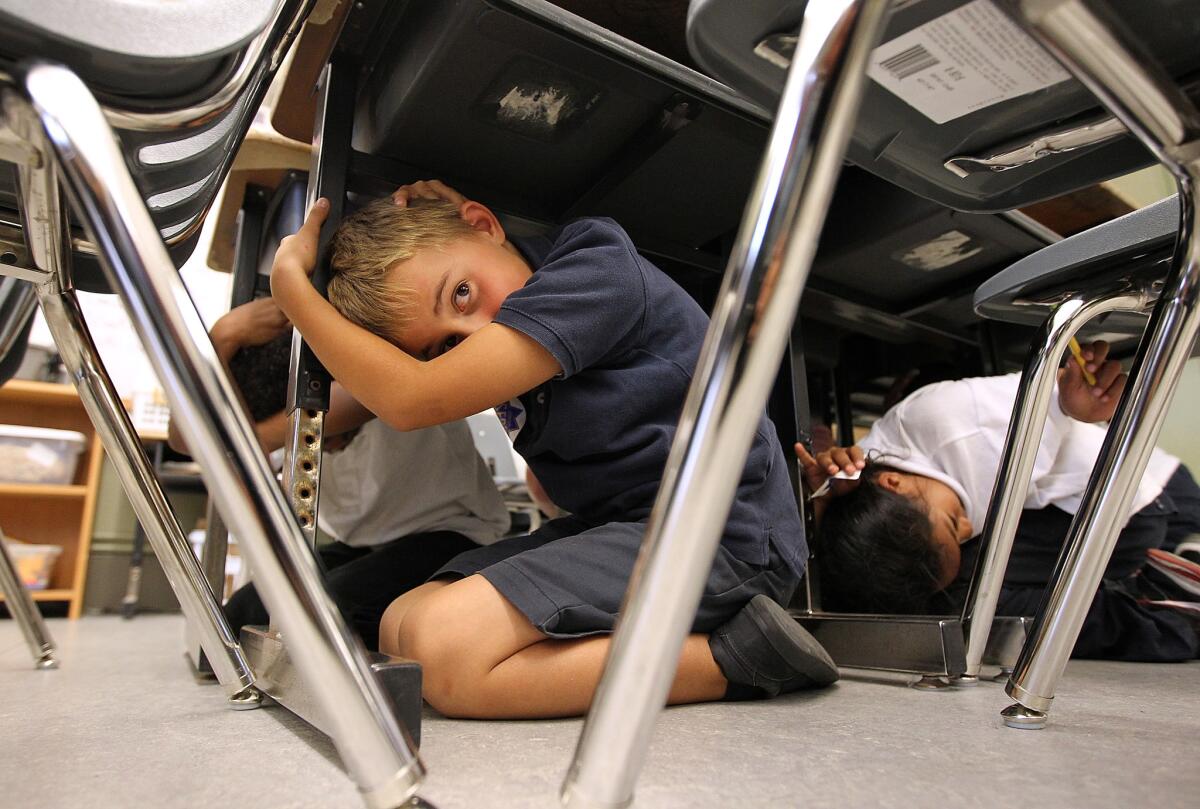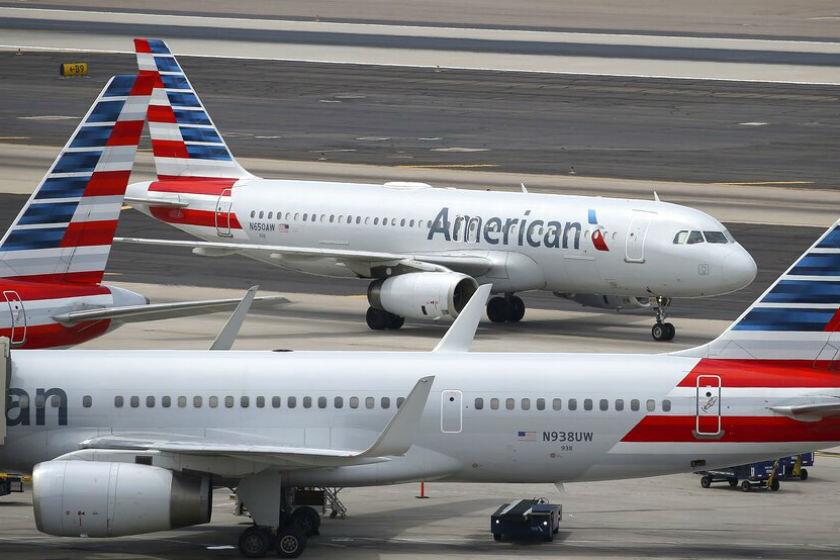San Francisco to require private schools to be seismically evaluated

Reporting from San Francisco — San Francisco will become the first city in California to close a major loophole in laws that are supposed to keep schoolchildren safe during earthquakes with a vote Tuesday by the Board of Supervisors.
The board unanimously approved a law that would require private schools to find out if classroom buildings would collapse in an earthquake. The law would not require a seismic retrofit, but some schools say that they would voluntarily retrofit if they find out their buildings need strengthening to avoid deaths in the next big earthquake.
Mayor Ed Lee said he will sign the law.
Government officials have long known that California’s private schools generally are not regulated for seismic safety. A law was passed 28 years ago proclaiming that children attending private schools should be protected under state law as public school students are. But the California Seismic Safety Commission in 2004 concluded that many city building departments aren’t even aware of the law and don’t enforce it.
“Private schools located in older buildings can pose a serious risk to the life-safety of their students,” the commission said. State officials have no idea of the scope of the problem because no one has regulated earthquake safety rules on private schools, the panel said.
San Francisco’s political leaders now say they can’t afford to ignore the issue.
“We certainly want our private schools to be safe,” said San Francisco Supervisor Jane Kim.
Keeping private schools operational is also important to getting San Francisco functioning after an earthquake.
“After disasters, if we’re not putting our kids in schools, we’re not recovering,” said Patrick Otellini, San Francisco’s director of earthquake safety.
In Los Angeles, officials are not focusing on private schools as a separate issue. Instead, the city is focusing on developing a program to address the citywide risk of two types of buildings known to be at risk for collapse during a major earthquake: older concrete buildings and structures with flimsy ground floors. Any private school with those types of buildings would be included in the program. There are more than 350 private schools in Los Angeles, attended by more than 70,000 children.
“We’re focusing on if the building is bad, it’s bad, doesn’t matter how it’s used,” said Lucy Jones, a U.S. Geological Survey seismologist acting as Mayor Eric Garcetti’s earthquake safety advisor. “We’re looking at the building type, rather than the use. ... Both are viable approaches.”
San Francisco’s law would require that about 120 private schools hire structural engineers to evaluate the earthquake safety of classroom buildings. The evaluations, estimated by the city to cost as low as $5,000 per building, would need to be done within three years under the law. Once submitted, they will be made available for public review at the Department of Building Inspection.
There are about 24,000 schoolchildren who attend private schools in San Francisco – giving it the highest percentage of children enrolled in private schools in the state (29%).
Other counties with high percentages include Marin (20%); San Mateo (15%); Napa (13%); Alameda and Santa Clara (12%); Los Angeles and Santa Cruz (11%); and Orange and Contra Costa (10%), according to the state seismic safety commission report.
San Francisco officials have been working on improving the safety of private schools as part of an ambitious 30-year plan, championed by Mayor Lee, to get more privately owned buildings strengthened before the next damaging earthquake.
But earlier this year, many private schools said they were caught by surprise at the swift three-year timetable of the proposed city law. Even though the proposed law doesn’t require retrofits, school officials said they knew they would need to act if classrooms turned out to be at risk of collapse.
“There’s nobody that doesn’t want seismic safety for school kids,” said Larry Kamer, a spokesman for the Roman Catholic Archdiocese of San Francisco, whose roughly 40 schools would be subject to the proposed law. “But it was important to get recognition from the city that we were talking about dollars — not just the small dollars to do the assessments, but the big dollars that would be needed for the inevitable retrofit.”
Kamer said schools would likely have to do fundraising to pay for retrofits, but it would be difficult for some campuses. Private school representatives have said some private schools cater to the working poor and do not have a large base of wealthy alumni.
“Private schools do not equal rich schools,” Kamer said. “For some, it will be asking very hard questions about the future. We think this process will inevitably lead to some schools closing. Because there are some schools that are already on the edge, financially.”
Still, Kamer and other private school leaders thanked city leaders for accepting changes to the first draft of the law, such as waiving evaluations for buildings that house fewer than 25 students a day and exempting noneducational buildings such as churches.
Although the changes help, fundraising would still be challenging for St. Stephen School, a kindergarten-through-eighth-grade campus, said its principal, Sharon McCarthy Allen. Most of the 325 students live with middle-class parents juggling the expensive cost of living in San Francisco; tuition there averages about $6,000 a year per student.
But the school would find a way to do a seismic retrofit if it’s needed.
“Of course we’re morally obligated to fix it, and we want to fix it,” she said. “At the end of the day, you’ve got to do what’s right.”
Other schools have pushed ahead with retrofit programs. One of San Francisco’s most prestigious private schools, St. Ignatius College Preparatory, embarked on a $6-million retrofit program that was completed this summer, which added reinforcing beams to the 1960s-era main school building and chapel.
A third building, used for administrative offices and housing for Jesuit priests, will be torn down.
Robert Gavin, assistant principal for student affairs, said the decision to retrofit was a no-brainer.
“It seems obtuse to be in one of the most seismically active places in the world … knowing that these strong earthquakes come every 30 years or so, not to make sure you do everything you can to make the buildings as safe as possible for the children,” Gavin said.
California has a long history of making earthquake safety a priority for public school buildings. The 1933 Long Beach earthquake shocked Californians when about 120 school buildings were damaged, and 70 of them collapsed. The collapses could have killed thousands of children and adults had the earthquake not struck at 5:54 p.m., after the school day had ended.
That near-calamity prompted the state to pass the Field Act, which has the state review and approve public school construction plans.
Laura Samant, who served as chair of a city committee on private school earthquake safety, said many parents have no idea that many local governments just don’t enforce laws to ensure private schools are safe in an earthquake.
“The vast majority of parents, they assume that the city requires all schools to be seismically safe, when this is not in fact the case,” Samant said. She said she understands that even though schools may find it a burden, at the very least, “we should require them to know.”
Twitter: @ronlin
Twitter: @RosannaXia
Lin reported from San Francisco, Xia from Los Angeles.
More to Read
Sign up for Essential California
The most important California stories and recommendations in your inbox every morning.
You may occasionally receive promotional content from the Los Angeles Times.












